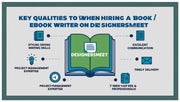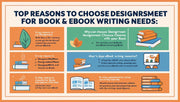In today’s digital-first world, a user-friendly website is a must for any business or brand. No matter how stunning the visuals are, if visitors struggle to navigate or find information, they’ll quickly leave. For freelance designers on platforms like DesignersMeet.com, creating websites that are not just beautiful but also functional can dramatically improve client satisfaction and the success of the final product.
The key to a user-friendly website lies in simplicity and clarity. Visitors should be able to understand what the site is about and how to navigate it within seconds. That starts with a clean, organized layout and a clear hierarchy. Keep navigation menus straightforward and limit them to essential pages—this reduces decision fatigue and keeps the user focused. A messy or overly complex layout can easily frustrate users and cause them to leave the site prematurely.
Mobile responsiveness is another critical aspect. With most users now browsing on mobile devices, it’s essential that websites adapt smoothly to different screen sizes. A site that looks great on a desktop but breaks on a smartphone will hurt the brand’s credibility. Freelance web designers who offer responsive design skills on DesignersMeet.com are in high demand because they understand the importance of accessibility and device adaptability.
Loading speed also plays a big role in user experience. Slow websites drive users away and can negatively impact search engine rankings. Designers should optimize images, streamline code, and avoid heavy plugins or unnecessary animations that can bog down performance. Many clients may not even be aware of these technical issues, so offering solutions for faster load times can add extra value to your service.
Consistency in design elements—such as font styles, button shapes, colors, and spacing—makes the website easier to use and visually appealing. When every page feels like part of the same family, users are less likely to feel lost or confused. Creating a consistent design system also saves time when scaling the site or adding new features in the future.
One often overlooked aspect is content structure. The way text is presented—through headings, bullet points, short paragraphs, and clear calls to action—can guide users toward taking the desired steps, whether that’s filling out a form, making a purchase, or simply exploring more. Good design supports the content, not overshadows it.
Finally, always test your design with real users or get feedback from others before finalizing. What makes sense to you as a designer might not be intuitive to someone unfamiliar with the layout. Freelancers on DesignersMeet.com who take the time to incorporate user testing or offer iterative design updates often see better project outcomes and more satisfied clients.
In conclusion, a user-friendly website is the result of thoughtful layout, responsiveness, speed optimization, visual consistency, and intuitive content flow. Designers who master these elements not only improve user satisfaction but also deliver long-term value to their clients—setting themselves apart as trusted professionals in the freelance marketplace.




